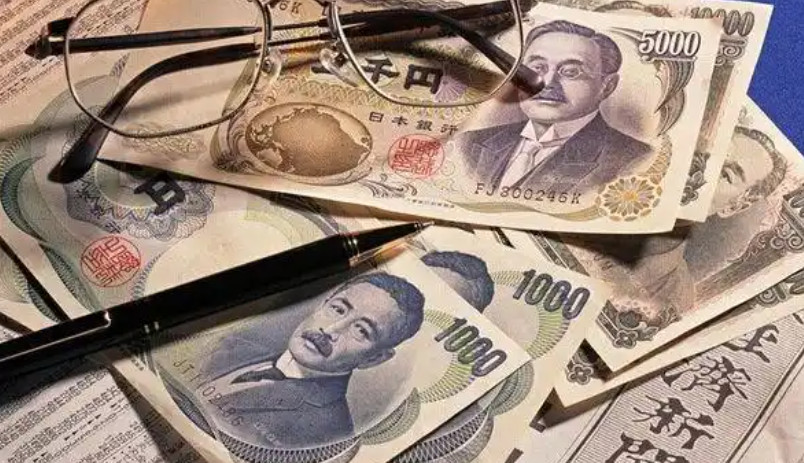
Recently, the Japanese economy is facing a dual blow of tariff policies and natural disasters. The latest research from the Yale University Budget Lab shows that US tariff policies will lead to a short-term increase of 1.8% in US prices, equivalent to an average annual loss of $2400 per American household; At the same time, Japan's South China Sea Trough earthquake warning system has issued a warning that if a 9.1-magnitude earthquake occurs, the economic losses could reach up to 292 trillion yen , directly threatening the stability of the global supply chain. These two major risks are intertwined and pushing the Japanese economy to the brink of structural crisis.
The tariff policy implemented by the United States towards Japan has created systemic pressure. In May 2025, Japan's export value decreased by 1.7% year-on-year, with core industries such as automobiles and steel experiencing a decline of 6.9% and 20.6% respectively, and exports to the United States falling by 11.1% for two consecutive months. This decline is not a short-term fluctuation - the 25% tariff imposed by the United States on the Japanese automotive industry directly impacts the automotive manufacturing industry, which accounts for 15% of Japan's GDP. Toyota, Honda and other companies have been forced to adjust their strategies: Honda plans to transfer 80% of its Mexican factory production capacity to the United States, while Nissan is considering accelerating its layout in Southeast Asia. Although this industrial transfer can avoid tariffs, it will lead to the hollowing out of Japan's domestic manufacturing industry, which is expected to reduce Japan's GDP by about 1 percentage point.
Even more severe is the resonance effect between tariff policies and the strengthening of the US dollar. At the beginning of 2025, the Bank of Japan was forced to raise its policy interest rate from 0.25% to 0.5%, reaching a 17 year high. Raising interest rates was originally intended to curb imported inflation, but it further pushed up corporate financing costs. According to data from Mitsubishi UFJ Morgan Stanley Securities, the depreciation of the yen and the rise in raw material prices have led to an increase in the number of bankruptcies among Japanese companies, with small and medium-sized enterprises accounting for 67%. This vicious cycle of "interest rate hikes bankruptcy unemployment" is eroding the resilience of the Japanese economy.
The insurance industry is at the forefront. After the 2011 East Japan earthquake, domestic insurance companies in Japan paid out 3.6 trillion yen, putting enormous pressure on the global reinsurance market. The estimated compensation for the South China Sea trough earthquake exceeds 100 trillion yen, which is equivalent to 20 times the total annual insurance compensation in Japan. This pressure may trigger systemic risks in the insurance industry, forcing reinsurance companies to increase premiums or withdraw from the Japanese market, further pushing up the cost of disaster prevention for enterprises.
The capital market response has already begun to show signs. After the earthquake warning was issued in April 2025, the Nikkei index plummeted by 3.2% in a single day, and the stock prices of multinational companies such as Toyota and SoftBank fell by more than 5%. The trend of capital outflow is intensifying: In the first half of 2025, Japan's outward foreign direct investment increased by 18% year-on-year, while domestic manufacturing investment decreased by 7.3% year-on-year. This trend of "de localization" is weakening the foundation of the Japanese economy.
Faced with internal and external difficulties, Japanese policy makers are caught in a dilemma: in terms of trade policy, although Japan has proposed cooperation with the United States in shipbuilding technology, liquefied natural gas development, and other fields, the core demand - the cancellation of automobile tariffs - has not yet been achieved. Oxford Economics predicts that even if a partial agreement is reached, Japan will still have to bear an additional tariff of around 10%, and the competitiveness of the automotive industry will continue to be damaged. In terms of disaster prevention investment, the government plans to invest 20 trillion yen to build tsunami shelters and strengthen infrastructure, but this is equivalent to 10 times the annual disaster prevention budget. Fiscal pressure has forced Japan to postpone its original tax reduction plan, further suppressing consumer demand. In terms of monetary policy, Bank of Japan Governor Kazuo Ueda admitted that tariff policies and earthquake risks make it difficult to predict price trends. If we forcefully raise interest rates to address inflation, it may accelerate corporate bankruptcy; If loose policies are maintained, it may trigger a vicious cycle of yen depreciation and imported inflation.
The fragility of the Japanese economy stems from deep-seated structural contradictions: excessive reliance on export-oriented industries, energy self-sufficiency rate of less than 6%, and labor shortages caused by an aging population. To break through the predicament, reforms need to be promoted from three aspects: industrial diversification, reducing dependence on single industries such as automobiles and semiconductors, and developing emerging industries such as hydrogen energy and artificial intelligence. In 2025, the Japanese government plans to invest 5 trillion yen to support the hydrogen energy industry chain, but progress is slow. Supply chain resilience, establishing a "regionalization+digitalization" supply chain system, while laying out backup production bases in Southeast Asia, utilizing blockchain technology to achieve real-time monitoring of the supply chain. Disaster prevention economy, incorporating earthquake risk into corporate ESG evaluation system, promoting the development of new catastrophe bonds in the insurance industry, and diversifying risks.
The Japanese economy is standing at a crossroads. The dual impact of tariff policies and earthquake risks is both a crisis and a turning point. Only by reshaping its economic model through structural reforms can Japan find vitality in the global changes. Otherwise, this once world's second-largest economy may really fall into the abyss of "returning to pre liberation overnight" in the double shock of earthquakes and trade wars, as warned by the Meteorological Agency.

The 7th EU-African Union Summit was held in Angola from November 24th to 25th.
The 7th EU-African Union Summit was held in Angola from Nov…
On November 26, 2025, in the biting cold of Washington, D.C…
In the midst of a global wave of technological advancement,…
In November 2025, the revelations by Reuters and Bloomberg …
The Dominican Republic recently announced that it will allo…
On November 26, 2025, the European Central Bank (ECB) relea…